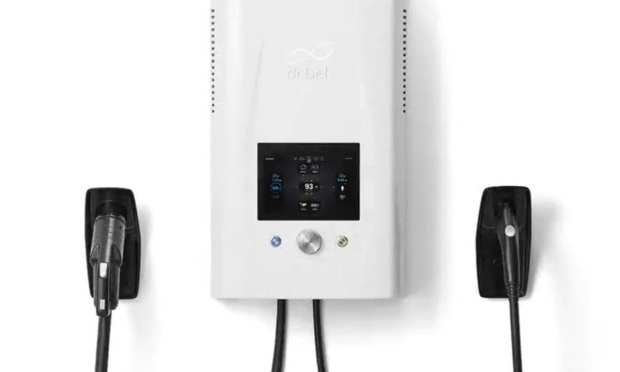dcbel CEO: Powering the Connected Economy Begins at Home (Literally)

The connected economy is changing how people, businesses and governments interact within and across once-separate silos.
Smart devices within those connected ecosystems are the conduit to linking daily life, from how we pay to how we travel. Within the home setting, appliances talk to one another, thermostats self-regulate, electric vehicles (EVs) charge.
And none of it is possible without energy.
Marc-Andre Forget, co-founder and CEO of dcbel, based in Montreal, said the same advanced technologies that make devices smarter through any number of use cases could bring control of solar power and electricity into the homeowners’ hands. That tech can power homes in a cost-efficient and allocation-efficient manner, even creating a market for peer-to-peer (P2P) trading of energy — watts as currency — to save and make money.
Without energy, there’s no telecommunication, real mobility or comfort within our home, he said. That energy need amplifies in a healthcare setting, where monitors, diagnostics and computers need electricity to keep us going. In the home setting, bringing data and analysis to bear on solar energy, even on the energy stored within an EV’s battery, can make power management an intelligent endeavor.
The firm’s dcbel r16 appliance uses hardware and artificial intelligence (AI)-driven operating system to, through a single device and point of contact, manage the ebb and flow of energy throughout the “smart” home. As a result, users can do everything from charging EVs to storing solar energy for later use when demand warrants it.
Energy On Demand
Storing energy in the home and using it according to the individual family’s needs represents a fundamental shift in the power industry itself.
Traditionally, we’ve had access to energy only through signing contracts with large corporations. Solar technology, Forget said, allows users to generate their power without having to sign those contracts, and in effect, take back control — beyond reselling it back to the utilities or simply turning down the thermostat.
AI and hardware can be combined to take energy generated from the solar panels and decide what to do with it.
“The artificial intelligence learns about our way of life inside our home,” he explained. “The AI know we have dinner at 5 p.m. and that the price of electricity at 5 or 6 p.m. is more expensive. Hey, but I have a family. I have kids. I need hot water. I need to cook dinner. Probably I need to go to the theater at 8 p.m. I’m going to need my electrical vehicles.”
Against that backdrop, he said, the dcbel system knows to take the energy that’s been stored in the battery contained within the residence, and at crucial times, extract and use that power — in effect, lowering the energy cost to the user.
Eventually, he said, P2 trading can monetize the energy generated in one home, selling it to neighbors (for instance, if one family goes on vacation, they can sell their stored, unused power to someone else).
Machine Learning, Watt By Watt
He said machine learning can find out individuals’ and families’ habits — when they are using EVs, when those EVs need to be charged and whether Thursday is a busier time in the house than Wednesday. The constant updates to data flow and analysis also take weather into account (and thus how much solar energy can be captured).
“Every five minutes, this is where we [are] going to compute the best solution,” said Forget. “How are we going to orchestrate your energy from what’s going to come from the sun, your wind turbine, your EV? What are we going to put in storage? What are we going to draw from?”
Asked about the cost savings generated from the business model and the technologies, Forget said that utility tariffs and locations are all factors, but managing home energy systems in this way can bring a payback of “between $500 to $1,500 annually.”
The company recently raised $40 million to bring its r16 to market, starting with initial deliveries in California, moving into the northeast (specifically the New York area) in the fall, and Texas (hard hit in recent months by power grid failures) early next year. A broader rollout will follow. Longer-term product development will target military dwellings, smaller homes and condos.
As Forget told PYMNTS: “We are in the middle of a grand energy transition, and that transition will affect, and is definitely tied to, the connected economy.”
